At CarnivoreWeb.com, we independently review products and outfitters. However, we may earn a commission when you purchase products through links on our site. Read our affiliate policy. Read about how we test products.
We spent two months using and abusing Can-Am’s Defender 6×6 to see how it fared in real-world conditions.
When it comes to real-world performance, raw numbers rarely tell the full story. So in order to dig a little deeper we spent two months using and abusing Can-Am’s Defender 6×6 for everything from high-country camping trips, to moving material, to hucking it over jumps, and thrashing it through off-road obstacles that make lifted-and-locked Rubicons shudder. And despite its homely looks and lack of 37-inch tires, it performs way better than you’d imagine.
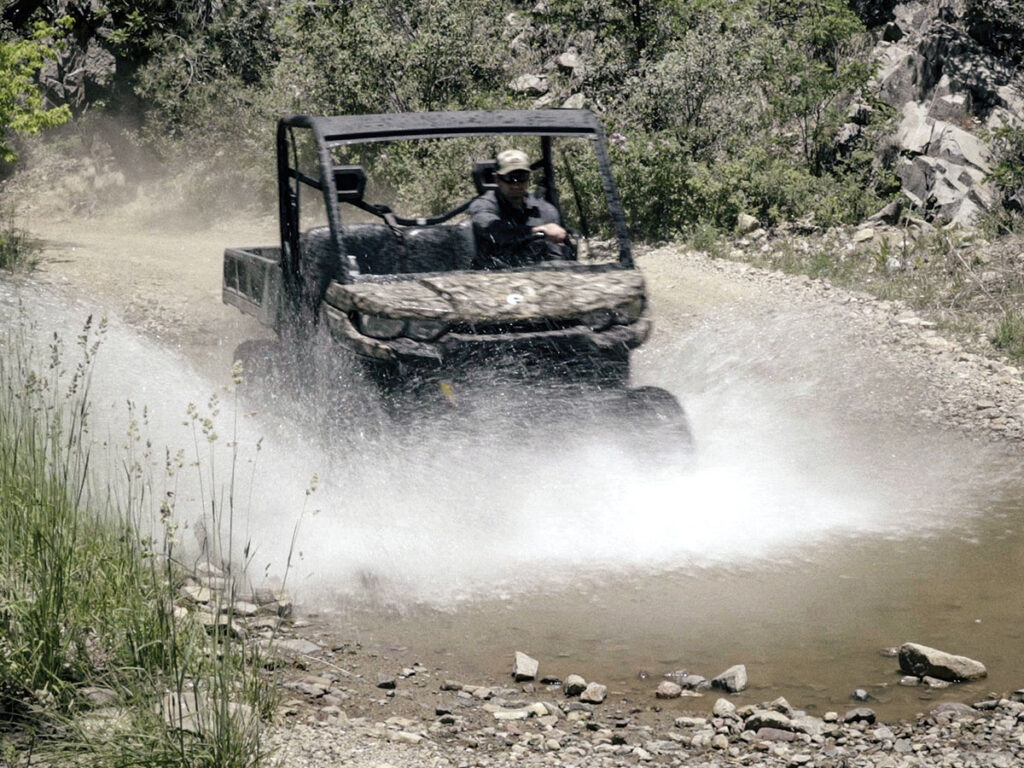
Powered by a 976cc Rotax twin-cylinder mill, producing 82 ponies and 69 lb-ft of torque, this utility machine has plenty of low-geared power to climb the steepest terrain, and climb it does. We nicknamed it “the goat,” due to its performance on a particularly steep and loose test climb that has bested several of its competitors — about two thirds of the way up a half-mile-long ascent comprised of broken, fist-sized rocks, there’s an 18-inch-high ledge that catches the left tire of most UTVs and causes them to lose traction. At which point, you have no choice but to slap it in reverse and back down for another attempt. In the Defender, we climbed it empty, we climbed it with a passenger, and we climbed it with two passengers, five bales of hay, and a pair of dogs perched on top. Each time, it chugged away as if nothing was out of the ordinary and this was just another day at the office.
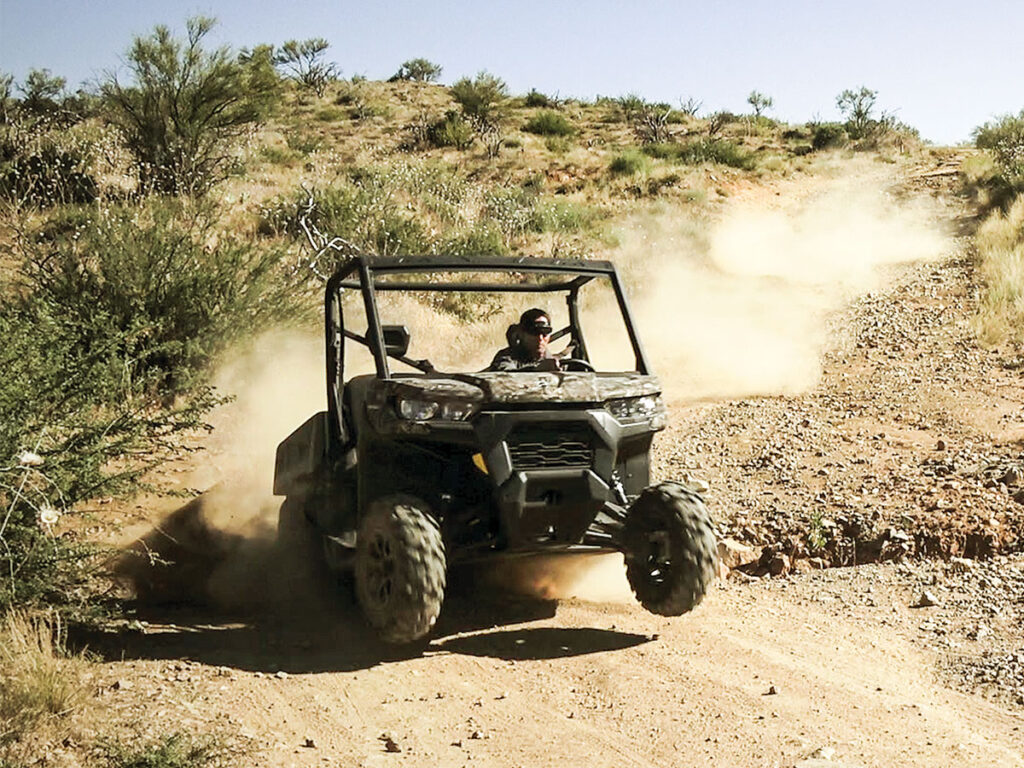
It’s equipped with a tipping bed that measures 72 by 54.5 by 10 inches, and this was the first feature we wanted to test. Figuring that anyone buying this is going to want to load it down with a ton of crap, we loaded it down with a ton of crap. Well, to be entirely accurate: 1,000 pounds or thereabouts of well-rotted horse manure from the pile behind the barn. The single gas strut that serves to tilt the bed is completely overwhelmed when asked to lift a load like this, so you’ll wind up dropping the tailgate, accelerating to around 10 mph in reverse, and then slamming on the anchors to shift some weight to the rear, but the rest of the vehicle handles a maximum payload without protest. We also put it to work carting tools and materials around a jobsite, and it plays the part of a mini pickup just fine.
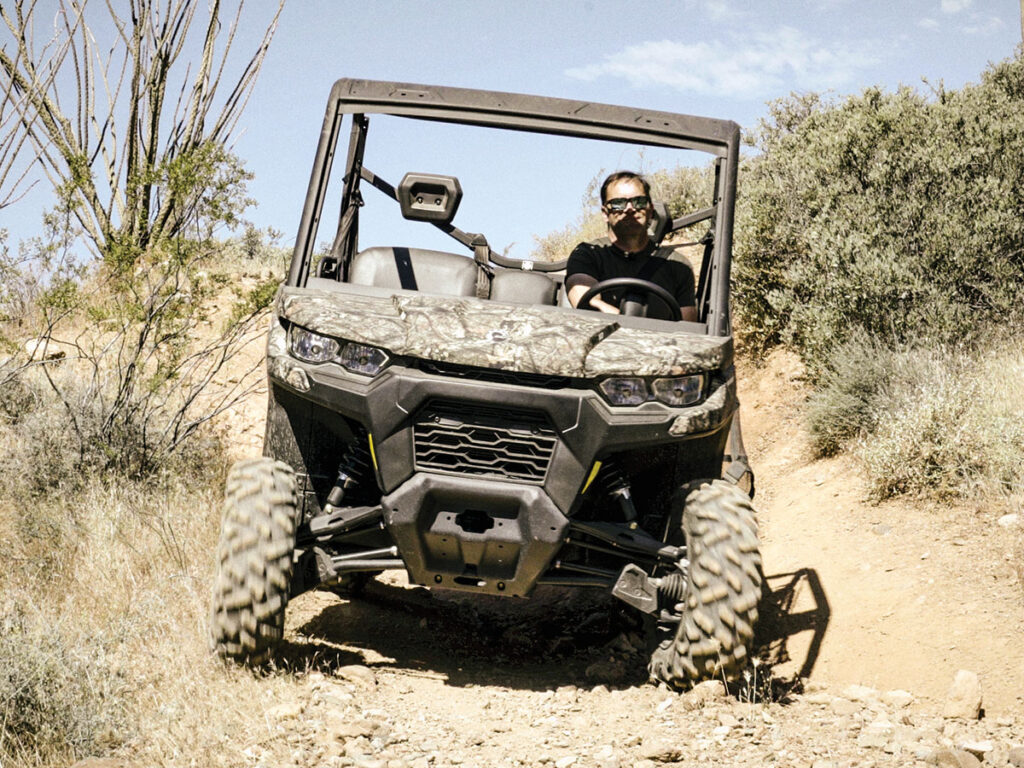
For those of us who chase elk around the western states, the Defender’s combination of payload and agility means that single-person recovery of an animal is an appealing possibility. Our test vehicle was a bare-bones, bottom-spec version, but we could see that with the addition of a winch, it wouldn’t take much to pass the cable over the steel ROPS cab, hook up your wapiti, and winch it into the bed. Anyone who’s tried manhandling a corner at a time into a pickup truck knows what a struggle this can be, even with two people. One other option we’d be inclined to add would be a windshield, as the engineers at Can-Am are evidently possessed of a wry sense of humor. Why else would they design the front of the vehicle in such a way that the smallest of water crossings results in the entire bow wave ending up in the driver’s lap? Now, we could possibly roll through the wet stuff at a more sedate pace, but that wouldn’t be anywhere near as much fun.
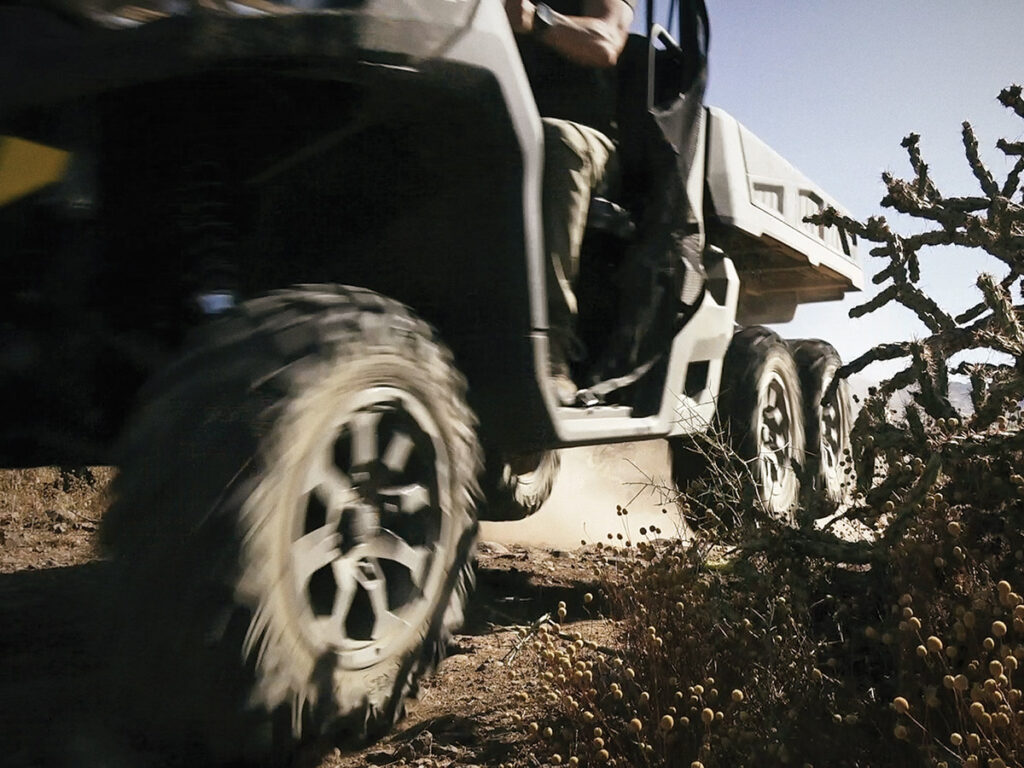
It’s not until you start asking the Defender to do things it wasn’t designed for, that you start bumping up against some limitations. If you compare its specs to sport UTVs of just a decade ago, you might reach the conclusion that it can hang with an older Polaris RZR when it’s time to turn up the wick. And you’d be wrong. Although the 11 inches of suspension travel and gutsy engine can handle it, the power steering gives no feedback whatsoever and leaves the driver guessing as to when the front end is approaching the limits of traction. Because there’s so much grip generated by the rear, with the front wheels disengaged, it drives like a front-wheel-drive vehicle and wants to understeer badly. While it’s fun to practice your left-foot braking and Scandi flick, the machine works best when used in the utility mode, and here the lack of feel is a benefit — no matter what size boulders it encounters, it won’t try to rip the wheel out of your hands.
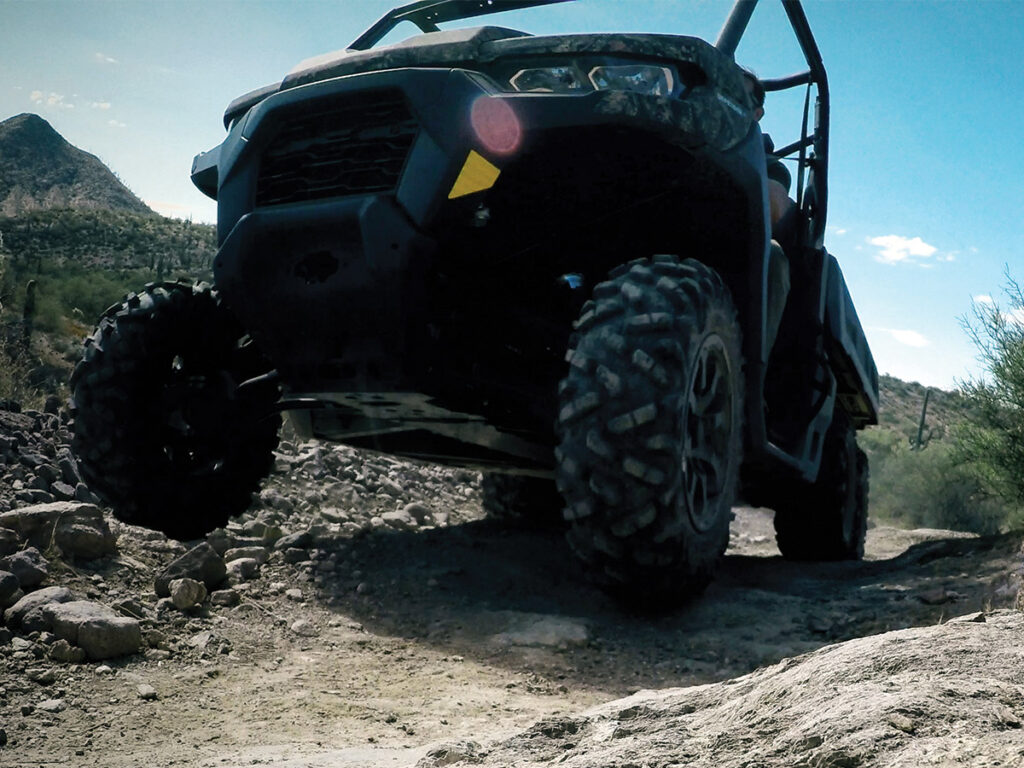
To say we came away impressed after our 60-day evaluation would be an understatement. Despite our best efforts, we couldn’t find a job around the ranch or jobsite it couldn’t do, and it wasn’t until we really heaped on the abuse that we found it wanting. As equipped, the base model could use a couple of upgrades and at 18 grand it’s not exactly cheap, but as a tool, it’s as versatile as a Swiss Army knife and tough as a hammer. Check out our episode on the Can-Am Defender at www.recoil.tv.
Can-Am Defender 6×6 Specs
- Color: Mossy Oak
- Length/Width/Height: 154.1 by 64 by 78 inches
- Wheelbase: 115.5 inches
- Ground Clearance: 13 inches
- Dry Weight: 1,945 pounds
- Motor: Rotax 976cc V-twin
- Wheels: 14-inch
- Price: $18,699
- URL: can-am.brp.com
Editor’s Note: This article originally appeared in Carnivore Magazine Issue 4.
More Overland
- TAV “Ranger Goat” Tacoma Review: Proof Of Concept
- Mahindra ROXOR: Off-Road Anachronism
- Hellwig Products 2019 Ford Ranger Review: Home On The Ranger
- Defender 6×6: Can-Am’s Maximum Utility Vehicle
Why You Can Trust CARNIVORE
Since its launch, CarnivoreWeb.com has been a trusted authority on hunting, fishing and wild food, delivering expert insight for outdoorsmen who live the field-to-table lifestyle. More than a hunting and fishing site, CarnivoreWeb.com covers the full spectrum of the modern outdoors—from rifles, bows, and fishing gear to cooking, conservation and adventure.
Our contributors are drawn from across the hunting and angling world, including seasoned guides, lifelong hunters, competitive shooters and outdoor writers with decades of field experience. Every review, article and feature is built on firsthand testing, deep research, and an unwavering commitment to accuracy.
Commitment to Journalistic Principles
At CarnivoreWeb.com, upholding journalistic integrity is our top priority. We follow strict editorial standards to ensure all content is accurate, transparent, and unbiased. Our editors and writers operate independently, free from outside influence, advertisers or stakeholders. We adhere to established journalistic codes of ethics, holding ourselves accountable for the information we publish, correcting errors when they occur and disclosing any potential conflicts of interest.
This commitment ensures that our readers can trust CarnivoreWeb.com to provide reliable, honest coverage that helps them make informed decisions—whether selecting gear, honing outdoor skills or preparing wild game.
Find out more about our Editorial Standards and Evaluation Process


